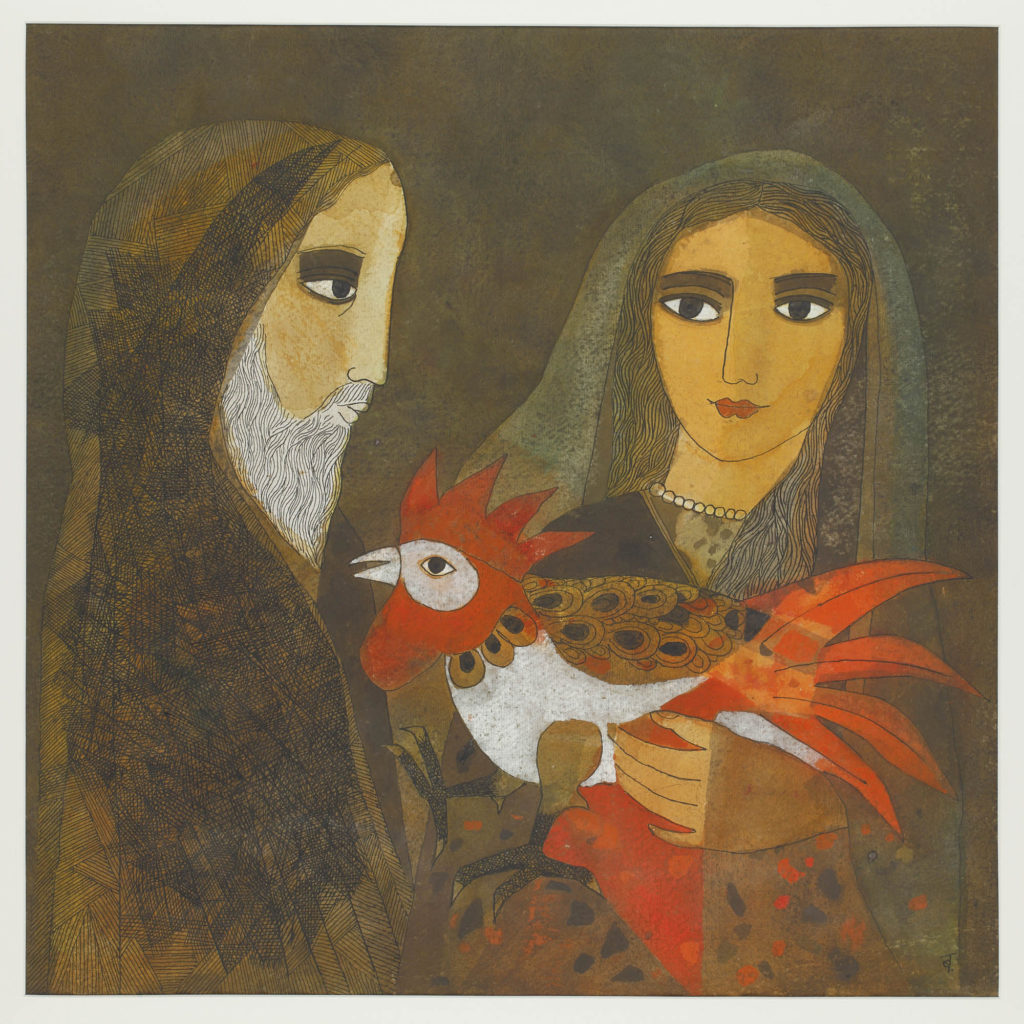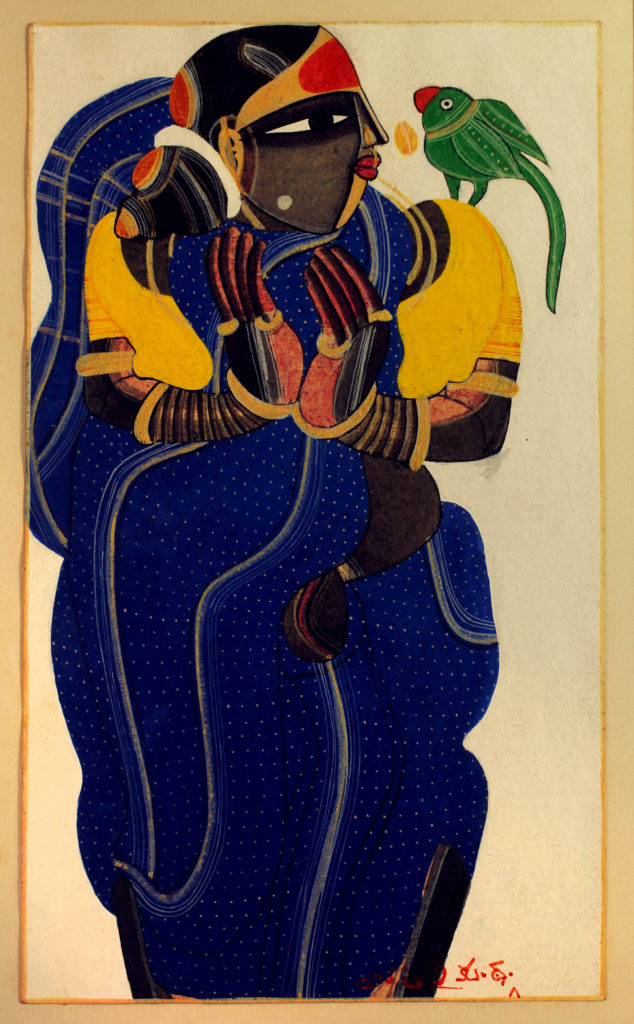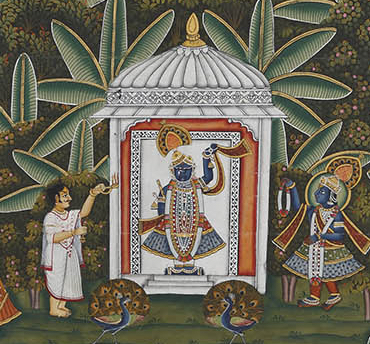All images © Sarmaya Arts Foundation
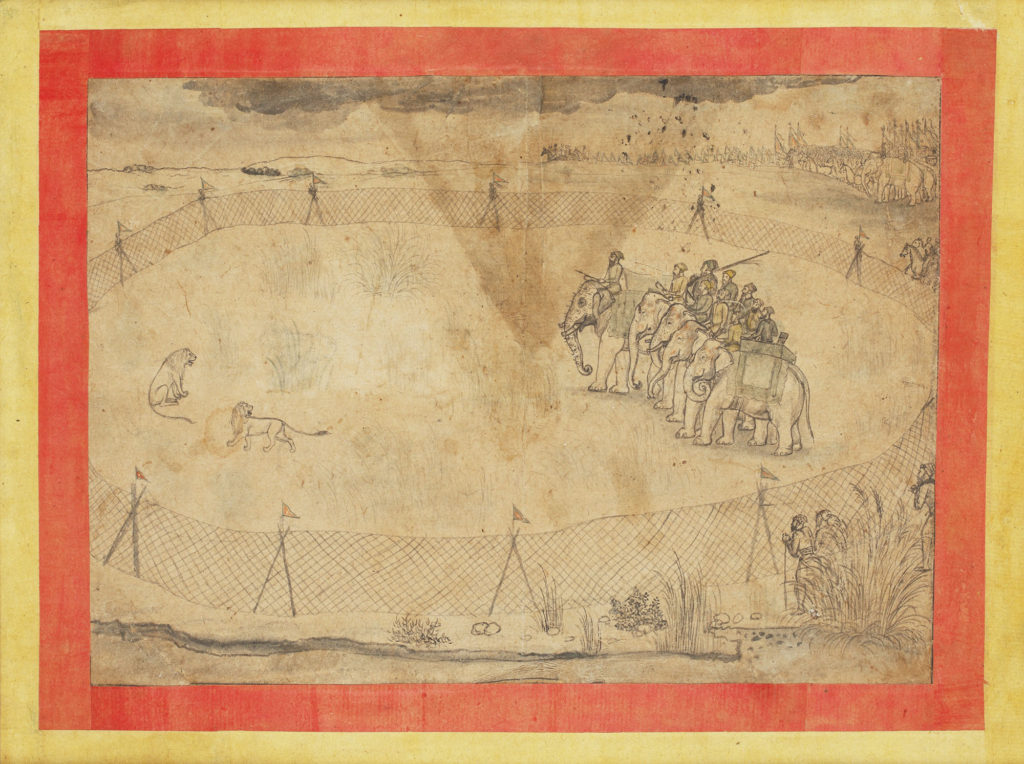
‘A Lion Hunt’, by an unknown Mughal court artist, 18th century
The past has a way of seeping inevitably into the present. This is especially true of modern and contemporary art, which sees history both as a fount of inspiration and a challenge to the imagination to see familiar forms through fresh eyes. One way to trace that journey over the centuries is to observe how animals have been represented in Indian art.
From ancient Indian tribal art to Mughal folios to avant-garde contemporary canvases, our land’s natural history has had a profound impact on our art. Traditional Mughal court portraiture and other art forms of the time, specifically during the 16th-century reign of Emperor Jahangir, shows the abundant presence of animals, birds and other, more mystical creatures. Jahangir was known to be a keen observer of nature in its manifestations. He often commissioned his master painter Mansur to make studies of exotic animals, which he would then develop into elaborately detailed folios.
Consider the Mughal-era painting above, titled A Lion Hunt by an unknown court artist from the 18th century. Elephants were depicted as the animals of battle and were often presented as symbols of honour. The Mughal court painting tradition frequently portrays multiple elephants in either court processions, or in hunting and battle scenes, as they were seen as the ultimate icons of wealth, power and sovereignty. Even though this scene also has lions, it’s the form of the elephant that embodies courage here.
A lot of the Mughal atelier artists like Mansur had a greater affinity for painting animals, mainly elephants, than humans. In the above painting of a battle between elephants and lions, it’s clear who the crowd favourite is. The elephants are portrayed in a grander, more majestic light, not only in terms of their size but also in their stance and numbers. It’s also obvious that the humans represented here are secondary to the animals. They are smaller and noticeably sidelined to the edges of the painting, unlike the elephants and lions which occupy centre-stage.
Where certain indigenous forms such as Mithila and Mata-Ni-Pachedi use animals to evoke the themes of fertility and virility, or as the divine extensions of certain gods and goddesses, in modern and contemporary Indian art, animals are often meant as stand-ins for human attributes or appetites. At other times, they may signify a spiritual enigma or an abstract thought.
For example, in Badri Narayan’s 1990 painting titled Kukkuta Jataka, the rooster carries the symbolic weight of the piece. In the Jataka Tales, Gautama Buddha takes the form of a rooster in order to teach a deceitful woman a lesson—read more here. Badri was heavily inspired by traditional Indian art forms like miniature paintings and folk art iconographies. Despite the two-dimensional quality of his work, it is contextually layered. As though to hint at the divinity of the animal in this work, the artist gives it a golden glow, almost an incandescent aura that suggests this common bird merits a deeper scrutiny.
On the other hand, there’s a more sensual air to Thota Vaikuntam’s 2001 painting Woman with Parrot. The central figure bears a strong resemblance with the alasa kanya, a popular sculptural motif in medieval Indian temples that depicts a decorative female form. In this work, the parrot is as significant as the woman on whose shoulder it is perched. It is used as a direct interactive element for the human form and is modelled along the lines of birds in traditional Indian paintings. Saturated with primary colour, bearing exaggerated forms and locked in a moment of intimacy, both the woman and parrot could be seen as unabashed representations of human desire.
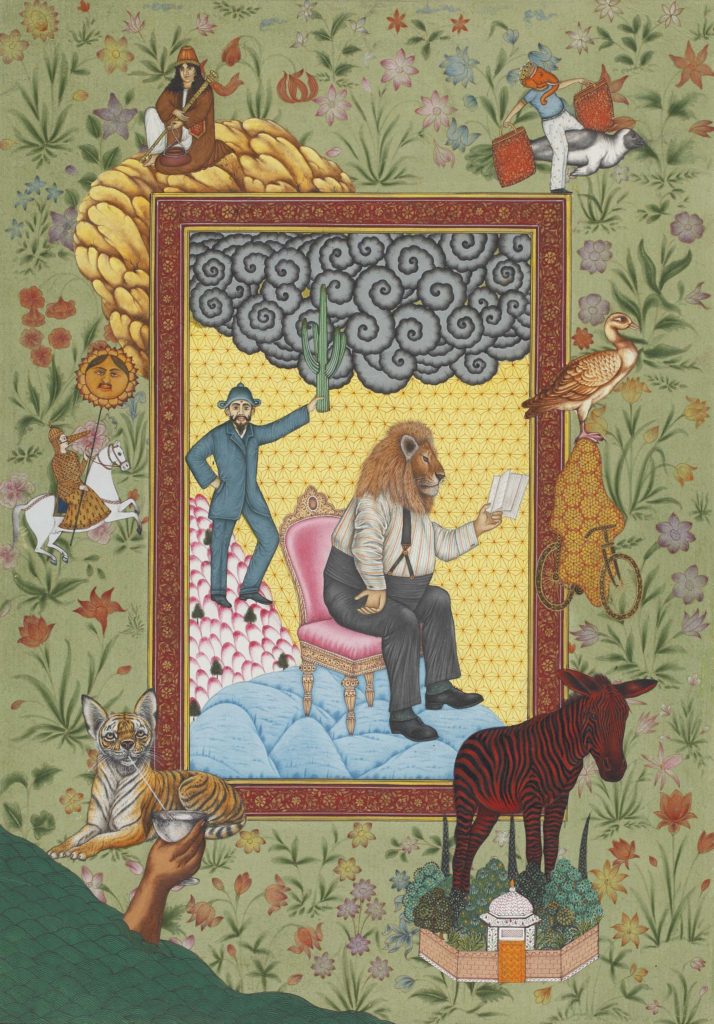
‘The Scholar, Before Breakfast’ by Alexander Gorlizki, 2015
Belonging to another century and drawing from a wholly different frame of reference, artist Alexander Gorlizki’s art uses the figures of animals and humans interchangeably in a surreal and magical fashion. In the 2015 painting titled The Scholar, Before Breakfast, a stout man reading a book appears to have a lion’s head, and a warrior with an elephant’s head is seen riding a seal. Influenced by classic Mughal miniatures, Gorlizki tries to create a strong narrative through his paintings but with a present-day quirky angle. He creates strange characters and places them out of their natural context, such as a zebra shown with black and red stripes, a tiger with a cat’s head and a goose on top of a beehive. Gorlizki’s work alludes to both tradition as well as nonconformity. Therefore, the narratives he creates seem to be bizarre yet familiar and endearing.
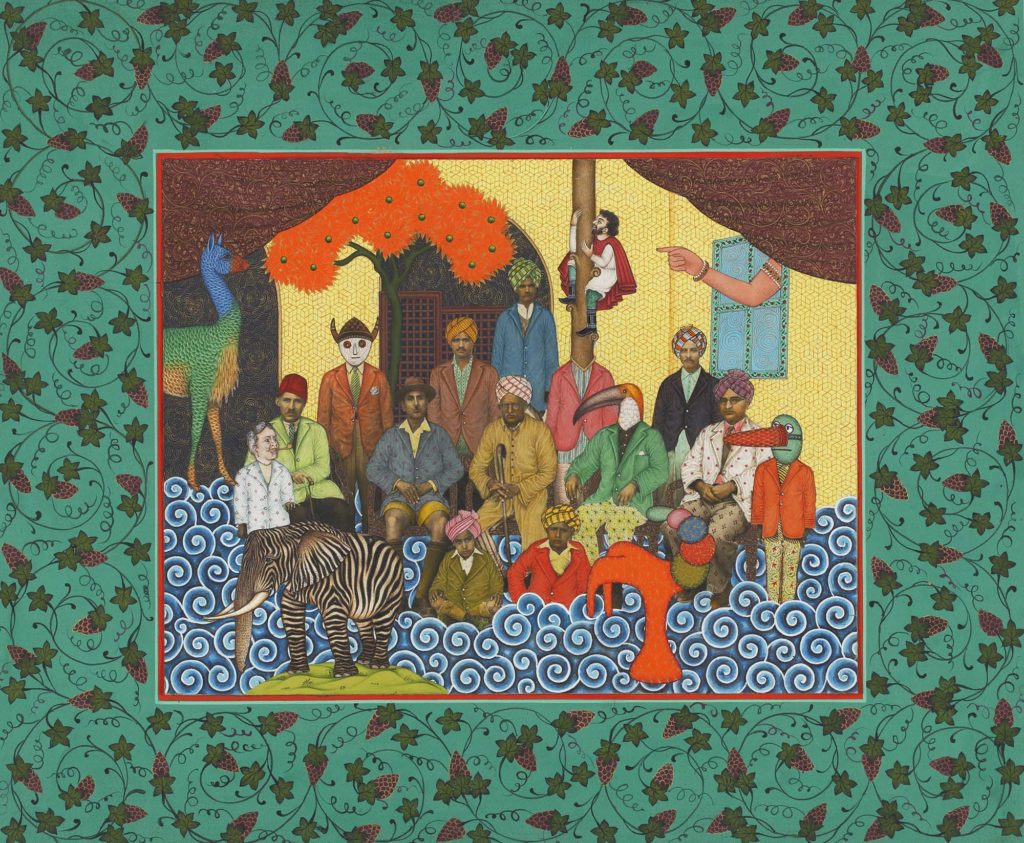
‘Gathering on a Family Farm’ by Alexander Gorlizki, 2017
In another work from 2017 by the same artist, Gathering on a Family Farm, human and animals forms are reproduced with great precision but with heads or other parts whimsically swapped. The llama appears to be a peacock and the elephant a zebra. The painting performs as a satire on the human condition—a family seems to have gathered in the courtyard to take a picture, but not everyone is what they seem. The Mughal miniature influence shows itself in the colourful, vibrant palette and the ornamental floral border. The real humans in the frame—clearly cut and pasted here from a painted photograph—are overpowered by the intrigue suggested by the other species. So despite inhabiting the margins, the animals seem to be the focus of the work.
Abhiniti Ahuja is a Curatorial Assistant at Sarmaya

